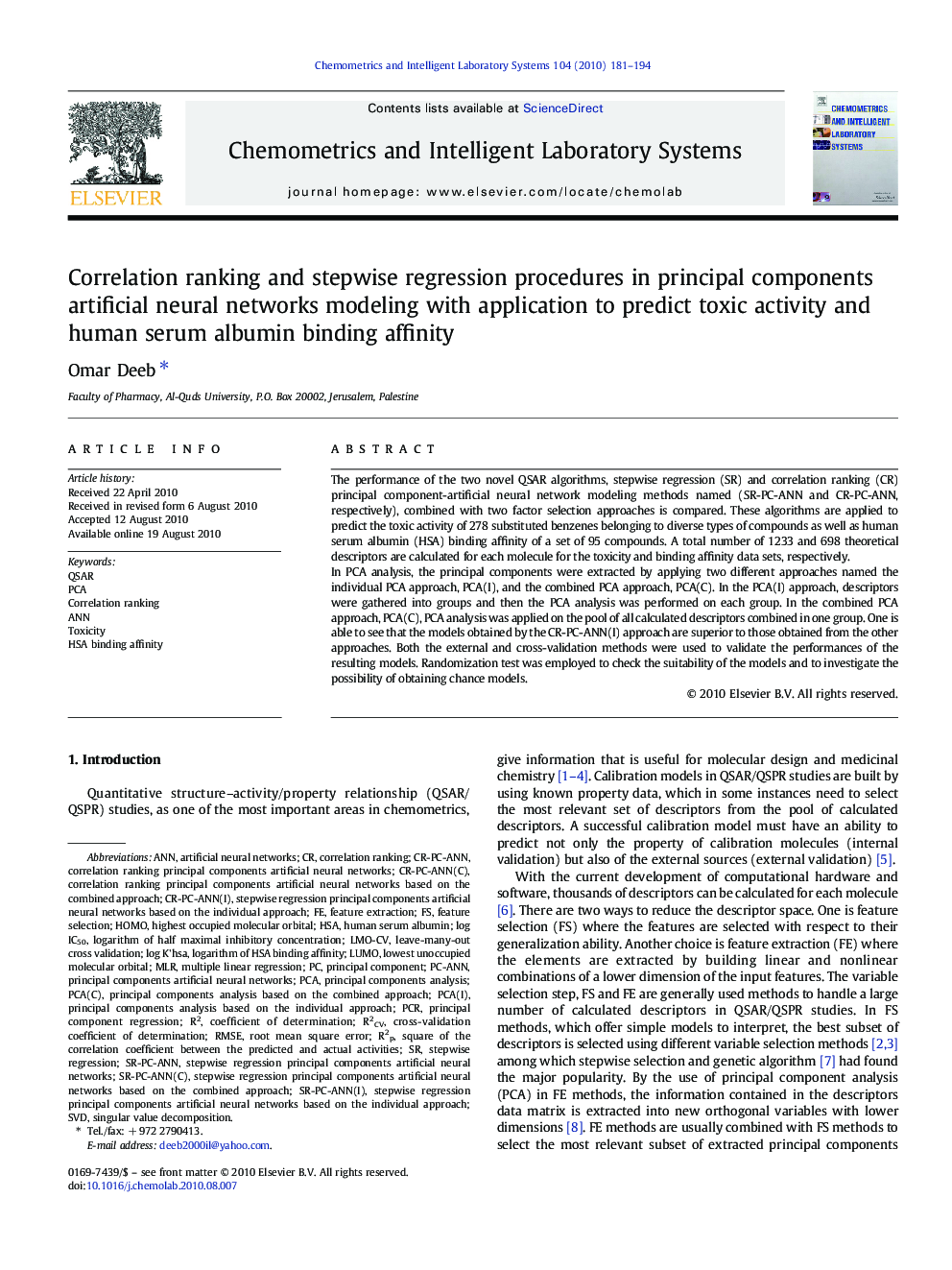| Article ID | Journal | Published Year | Pages | File Type |
|---|---|---|---|---|
| 1181575 | Chemometrics and Intelligent Laboratory Systems | 2010 | 14 Pages |
The performance of the two novel QSAR algorithms, stepwise regression (SR) and correlation ranking (CR) principal component-artificial neural network modeling methods named (SR-PC-ANN and CR-PC-ANN, respectively), combined with two factor selection approaches is compared. These algorithms are applied to predict the toxic activity of 278 substituted benzenes belonging to diverse types of compounds as well as human serum albumin (HSA) binding affinity of a set of 95 compounds. A total number of 1233 and 698 theoretical descriptors are calculated for each molecule for the toxicity and binding affinity data sets, respectively.In PCA analysis, the principal components were extracted by applying two different approaches named the individual PCA approach, PCA(I), and the combined PCA approach, PCA(C). In the PCA(I) approach, descriptors were gathered into groups and then the PCA analysis was performed on each group. In the combined PCA approach, PCA(C), PCA analysis was applied on the pool of all calculated descriptors combined in one group. One is able to see that the models obtained by the CR-PC-ANN(I) approach are superior to those obtained from the other approaches. Both the external and cross-validation methods were used to validate the performances of the resulting models. Randomization test was employed to check the suitability of the models and to investigate the possibility of obtaining chance models.
